Cultural tours in Tanzania take you to discover the countries diverse heritage. There are 120 tribes in Tanzania and because of that, Tanzania’s culture is just as varied as the wildlife in the country. The fact that these tribes have learnt to live in harmony (at least when you compare with what is happening in some of the neighboring countries) is an achievement that is often understated. Each of the 120 tribes have their own traditional dances, music, rituals, social practices, art and traditional religious beliefs.
Given her cultural diversity, Tanzania is not just about wildlife and beaches. We think that a visit to this beautiful country would be incomplete without experiencing the way of life of the people and the 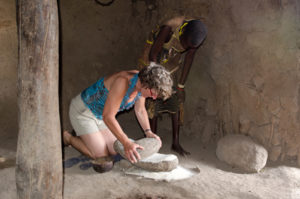 amazing historical sites. By experiencing the culture of people in another country, one gets to understand their values and what makes them different. It is also an opportunity to compare these values with your own and acquire perspectives that may help change your opinion of them.
amazing historical sites. By experiencing the culture of people in another country, one gets to understand their values and what makes them different. It is also an opportunity to compare these values with your own and acquire perspectives that may help change your opinion of them.
Cultural tours in Tanzania offer amazing opportunities to meet some of Africa’s most interesting indigenous tribes and historical sites. The cultural tours are often an additional activity to standard game drives, other wildlife experiences and experiencing the beautiful beaches of the Indian ocean. A remarkable development was the partnership between the government of Tanzania and the Netherlands Development Organization (SNV) to develop special villages where some of the local tribal groups can offer an authentic cultural experience. Visiting these villages provides tourists with opportunities to observe and experience how the local people live life in a rural setting. At the end of the day, the proceeds are used to develop the villages while also offering jobs to peasants. The village developments are in form of building schools, water holes, health centers and reforestation. We will now begin discussing the popular cultural attractions in Tanzania but before that, you might want to read about the major tourist attractions in Tanzania.
Cultural Attractions in Tanzania
Experience the Swahili Culture: The Swahili culture was born as a result of intermarriages, exchange of ideas and trade with foreigners (Arabs, Greeks, Persians, Romans and Chinese) starting  about two thousand years ago. The Swahili culture started in the islands and coastal towns along the Indian ocean stretching all the way to Kenya. In time, the culture spread to the inner parts of East Africa. The Swahili culture and cuisines takes inspiration from the Persians, Greeks, Romans, Arabs and Chinese. Kiswahili has grown from a language of trade to become a national language that unites all the people of Tanzania. To experience the authentic Swahili culture, one needs to visit Zanzibar island. Here you will immediately notice the result of the intermarriages between the local Bantu people and foreigners arriving at the coast. The key features of the original Swahili-speaking people are their lighter skins, business-orientation and Swahili mother tongue.
about two thousand years ago. The Swahili culture started in the islands and coastal towns along the Indian ocean stretching all the way to Kenya. In time, the culture spread to the inner parts of East Africa. The Swahili culture and cuisines takes inspiration from the Persians, Greeks, Romans, Arabs and Chinese. Kiswahili has grown from a language of trade to become a national language that unites all the people of Tanzania. To experience the authentic Swahili culture, one needs to visit Zanzibar island. Here you will immediately notice the result of the intermarriages between the local Bantu people and foreigners arriving at the coast. The key features of the original Swahili-speaking people are their lighter skins, business-orientation and Swahili mother tongue.
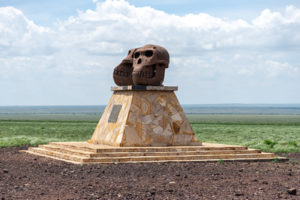 Olduvai Gorge: The Olduvai Gorge is an archeological site where Dr. Louis Leakey discovered the skull of the “Nutcracker Man” also known as Zinjanthropus in 1959. This particular fossil and many others date back to about 2 million years ago. Because of these discoveries, Oduvai Gorge is now known as the cradle of Mankind. The handy man or “Homo habilis” and the Zinjanthropus can be seen in a small museum at the site. Olduvai Gorge is found along the road leading to the Serengeti National Park and Ngorongoro crater.
Olduvai Gorge: The Olduvai Gorge is an archeological site where Dr. Louis Leakey discovered the skull of the “Nutcracker Man” also known as Zinjanthropus in 1959. This particular fossil and many others date back to about 2 million years ago. Because of these discoveries, Oduvai Gorge is now known as the cradle of Mankind. The handy man or “Homo habilis” and the Zinjanthropus can be seen in a small museum at the site. Olduvai Gorge is found along the road leading to the Serengeti National Park and Ngorongoro crater.
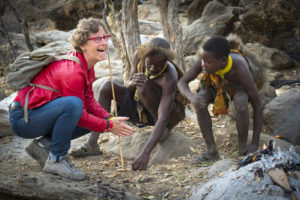 Visiting the Hadzabe Tribe: Like the Khoisan in Southern Africa, the Hadzabe Bushmen speak a language consisting of clicks. They still live as hunters and gathers along the caves of Lake Eyasi. The Hadzabe first arrived in Tanzania about 10,000 years ago but their numbers have dwindled in recent decades with only about 1000 left. The decline in population is because of climate change, competition for resources with more assertive tribes like the neighboring Datoga tribe and commercial hunting which has left them with little to feed on. What has protected this tribe from total extinction is the isolation and primitive lifestyle.
Visiting the Hadzabe Tribe: Like the Khoisan in Southern Africa, the Hadzabe Bushmen speak a language consisting of clicks. They still live as hunters and gathers along the caves of Lake Eyasi. The Hadzabe first arrived in Tanzania about 10,000 years ago but their numbers have dwindled in recent decades with only about 1000 left. The decline in population is because of climate change, competition for resources with more assertive tribes like the neighboring Datoga tribe and commercial hunting which has left them with little to feed on. What has protected this tribe from total extinction is the isolation and primitive lifestyle.
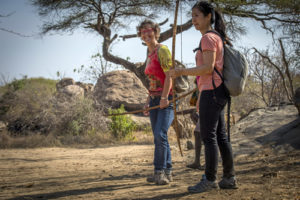 Visiting this ancient tribe will expose you to their unique way of living and culture. What will you learn from visiting the Hadzabe? You learn how honey, fruits and tubers are collected out in the wild. You also learn how to make bows and poisoned arrows. There is also the traditional dance performances and storytelling from the elders. The Hadzabe will teach you how to smoke meat, make fire using sticks, build huts and track wild animals. You may even be lucky to take part in a marriage ceremony or visit one of their winter caves.
Visiting this ancient tribe will expose you to their unique way of living and culture. What will you learn from visiting the Hadzabe? You learn how honey, fruits and tubers are collected out in the wild. You also learn how to make bows and poisoned arrows. There is also the traditional dance performances and storytelling from the elders. The Hadzabe will teach you how to smoke meat, make fire using sticks, build huts and track wild animals. You may even be lucky to take part in a marriage ceremony or visit one of their winter caves.
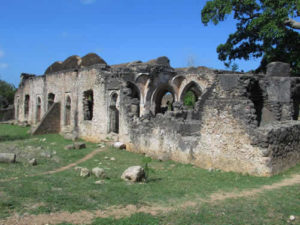 Kilwa: This is one of the historical islands in coastal area. Kilwa was the most powerful and prominent city in the coast of East Africa from between the 12th and 15th century. As a trading Center in the Indian ocean, Kilwa linked Asia with East Africa’s interior. Arabs and Persians settled in Kilwa as early as the 9th Century. The lasting imprints have made the island a UNESCO World Heritage Site hence one of the best places to learn about the Swahili culture and great architecture left behind.
Kilwa: This is one of the historical islands in coastal area. Kilwa was the most powerful and prominent city in the coast of East Africa from between the 12th and 15th century. As a trading Center in the Indian ocean, Kilwa linked Asia with East Africa’s interior. Arabs and Persians settled in Kilwa as early as the 9th Century. The lasting imprints have made the island a UNESCO World Heritage Site hence one of the best places to learn about the Swahili culture and great architecture left behind.
Mto wa Mbu: Mto wa Mbu is one of Tanzania’s leading cultural sites. It was built on the foot of the East African Rift Valley by the Government of Tanzania in conjunction with SNV. The site lies close to  Lake Manyara National Park, the Serengeti and Ngorongoro Conservation Area. Mto wa Mbu brings together many of Tanzania’s tribes to showcase their own cultural heritage. The site has grown so much that it is now a small town on its own. No other place brings together tribes from almost every part of the country in the way that Mto wa Mbu does.
Lake Manyara National Park, the Serengeti and Ngorongoro Conservation Area. Mto wa Mbu brings together many of Tanzania’s tribes to showcase their own cultural heritage. The site has grown so much that it is now a small town on its own. No other place brings together tribes from almost every part of the country in the way that Mto wa Mbu does.
The main activities while at the site include climbing the Balala Hill, visiting the local farms, going for a village walk and checking out the local development projects. For those who love art or wish to buy souvenir, this is one place you cannot afford to miss. By the end of your visit, you would have encountered the Chagga people, the Sandawe, the Rangi and the Mbugwe among others.
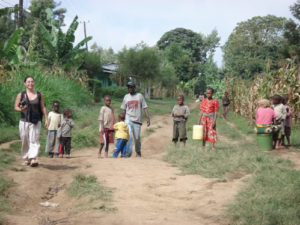 Visiting the Ng’iresi village. This village is found on the slopes of Mount Meru – 7 kilometers away from the town of Arusha. The Waarusha tribe occupy the village. Though related to the Masai people, the Waarusha have embraced farming as their main activity. While with them, tourists are exposed to their unique culture through listening to stories from the elders, visiting some of the individual homes, visiting the farms and helping prepare the local food. A guided tour of the village can take a whole day ending on the foothills of the mountain. Other interesting activities while with the Waarusha people include climbing the Kivesi and Lekimana hills.
Visiting the Ng’iresi village. This village is found on the slopes of Mount Meru – 7 kilometers away from the town of Arusha. The Waarusha tribe occupy the village. Though related to the Masai people, the Waarusha have embraced farming as their main activity. While with them, tourists are exposed to their unique culture through listening to stories from the elders, visiting some of the individual homes, visiting the farms and helping prepare the local food. A guided tour of the village can take a whole day ending on the foothills of the mountain. Other interesting activities while with the Waarusha people include climbing the Kivesi and Lekimana hills.
Mulala village: Still in Arusha is Mulala village found 30 kilometers away from Arusha town. This village lies on the southern slopes of Mountain Meru and is also a favorite destination for tourists who 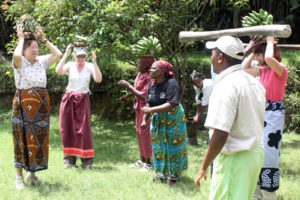 are interested in immersing themselves in the beautiful culture of the people of Tanzania. Cultural tours in Mulala are organized by Agape Women’s Group. The women guides will take you around the village to learn about the lifestyle of the Waarusha tribe. Expect to be taken to the local farms where you will learn how to make cheese and bread. A tour can be extended to the Marisha River for a chance to see some of the medicinal plants used to cure common ailments. You can also be taken to Ziwa la Mzungu to spot a large colony of fruit bats. The Lemeka Hill provides jaw-dropping views of Mount Meru and Kilimanjaro hence a perfect spot for taking photos.
are interested in immersing themselves in the beautiful culture of the people of Tanzania. Cultural tours in Mulala are organized by Agape Women’s Group. The women guides will take you around the village to learn about the lifestyle of the Waarusha tribe. Expect to be taken to the local farms where you will learn how to make cheese and bread. A tour can be extended to the Marisha River for a chance to see some of the medicinal plants used to cure common ailments. You can also be taken to Ziwa la Mzungu to spot a large colony of fruit bats. The Lemeka Hill provides jaw-dropping views of Mount Meru and Kilimanjaro hence a perfect spot for taking photos.
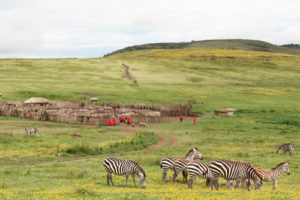 Maasai Tribe and their Bomas: The Masai migrated from Kenya to Tanzania around the 15th century. As they arrived into the country, they fought other tribes in order to acquire more pasture for their domestic animals. The Masai stand out from all other tribes in Tanzania because of their pride, intelligence, assertiveness but also friendly nature. They are arguably the most visited indigenous tribes in Africa.
Maasai Tribe and their Bomas: The Masai migrated from Kenya to Tanzania around the 15th century. As they arrived into the country, they fought other tribes in order to acquire more pasture for their domestic animals. The Masai stand out from all other tribes in Tanzania because of their pride, intelligence, assertiveness but also friendly nature. They are arguably the most visited indigenous tribes in Africa.
The Masai believe all cattle belong to them 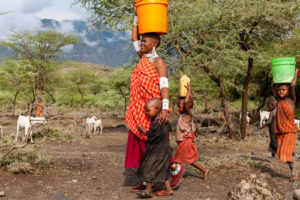 regardless of where they are located on earth. They would organize raids to reclaim their cattle from other tribes hence causing great devastation. The government put a top to their raids and claims but have allowed them to live close to the Ngorongoro Conservation Area hence offering tourists an opportunity to visit them.
regardless of where they are located on earth. They would organize raids to reclaim their cattle from other tribes hence causing great devastation. The government put a top to their raids and claims but have allowed them to live close to the Ngorongoro Conservation Area hence offering tourists an opportunity to visit them.
On a typical Masai Community visit, tourists are able to visit their bomas (homesteads) or manyattas and learn from the elders about their cultural heritage. A visit is incomplete 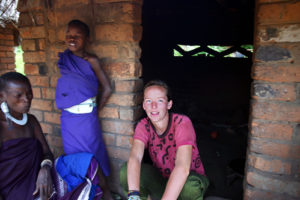 without watching Maasai warriors leaping, dancing and drumming. For the best cultural encounters, you need to visit the Seneto Maasai Boma and Irkeepus in the Ngorongoro area.
without watching Maasai warriors leaping, dancing and drumming. For the best cultural encounters, you need to visit the Seneto Maasai Boma and Irkeepus in the Ngorongoro area.
Experience the Culture of the Datoga Tribe: The Datoga are a Nilotic tribe living close to the Masai people in northern Tanzania. Along with the Hadzabe, they are one of the last truly primitive tribes in the country. Like the Masai, they rely on cattle keeping but have recently embraced subsistence farming. One of the intriguing things about the Datoga is their dress code. They wear bracelets and collars made of brass or bead. Another outstanding feature of the Datoga are the tattoos 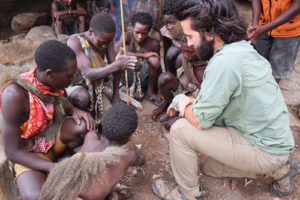 surrounding their eyes. The Datoga culture encourages aggression and because of that have not always lived peacefully with their neighbors like the Iraqw or Hadzabe. Despite their reputation as warriors, the Datoga are friendly to tourists. If you pay them a visit, they can share a lot about their life and cultural beliefs. What will you see when you visit the Datoga? Well, you will learn about their way of living including how to prepare cattle fences, build huts, make traditional dresses, make weapons and milk a cow. You will also learn how to make traditional beer, food and herbs to treat common ailments.
surrounding their eyes. The Datoga culture encourages aggression and because of that have not always lived peacefully with their neighbors like the Iraqw or Hadzabe. Despite their reputation as warriors, the Datoga are friendly to tourists. If you pay them a visit, they can share a lot about their life and cultural beliefs. What will you see when you visit the Datoga? Well, you will learn about their way of living including how to prepare cattle fences, build huts, make traditional dresses, make weapons and milk a cow. You will also learn how to make traditional beer, food and herbs to treat common ailments.
Stone Town and Zanzibar Island: A visit to Tanzania is incomplete without exploring the top attractions in Zanzibar. Known for its spices, fruits, flowers and fragrances, Zanzibar is one of the  most visited islands in the East African coast. A key attraction is Stone town with its ancient structures and Swahili culture. Before Europeans arrived in East Africa, Arabs, Egyptians, Chinese, Assyrians, Sumerians and Phoenicians had already set sail in Zanzibar. The Island later received great European explorers like Speke, Grant, Kraft, Livingstone, Burton and Rebman. The arrival of foreigners in the East African Coast led to intermarriages and hence the birth of the Swahili culture. The impact of these foreign arrivals in Zanzibar also left behind amazing architecture and that is why the old Stone Town is now a UNESCO World Heritage Site.
most visited islands in the East African coast. A key attraction is Stone town with its ancient structures and Swahili culture. Before Europeans arrived in East Africa, Arabs, Egyptians, Chinese, Assyrians, Sumerians and Phoenicians had already set sail in Zanzibar. The Island later received great European explorers like Speke, Grant, Kraft, Livingstone, Burton and Rebman. The arrival of foreigners in the East African Coast led to intermarriages and hence the birth of the Swahili culture. The impact of these foreign arrivals in Zanzibar also left behind amazing architecture and that is why the old Stone Town is now a UNESCO World Heritage Site.
The Kondoa Rock Paintings: Found in Kolo and about 260 kilometers from Arusha town, this UNESCO World Heritage site hosts ancient rock paintings. The paintings consist of humans and wild 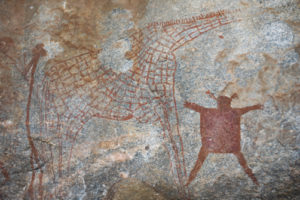 animals like giraffe, eland and elephants. The Kondoa Rock Paintings date back to about 10,000 years ago and are of good quality. Most of the paintings are in dark red color and are attributed to the bushmen living in the area as hunters/gatherers. These bushmen used clicking sounds for communication and are ancestors to the Sandawe tribe who currently live in the area. Apart from the Kondoa Rock Paintings, there are also more recent paintings by the Warangi people that date to about 500 years ago. If you are visiting Tarangire, Mount Kilimanjaro or the national parks in the northern circuit, this is one place you should spare time to visit.
animals like giraffe, eland and elephants. The Kondoa Rock Paintings date back to about 10,000 years ago and are of good quality. Most of the paintings are in dark red color and are attributed to the bushmen living in the area as hunters/gatherers. These bushmen used clicking sounds for communication and are ancestors to the Sandawe tribe who currently live in the area. Apart from the Kondoa Rock Paintings, there are also more recent paintings by the Warangi people that date to about 500 years ago. If you are visiting Tarangire, Mount Kilimanjaro or the national parks in the northern circuit, this is one place you should spare time to visit.
Spend time with the Iraqw Tribe: The Iraqw are a tall Cushitic-speaking tribe who migrated to the country from Mesopotamia. They traveled through Palestine, Egypt, Ethiopia and Kenya before 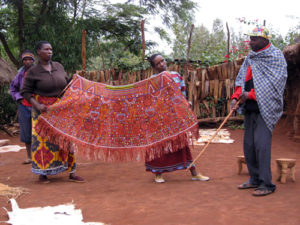 reaching in Tanzania. They had to adapt as they met many challenges along the way. In Tanzania, they had to endure harassment from the Masai and the Datoga before settling in areas around Arusha and Manyara. Because of their unique culture and having to contend with the local tribes living in the area, the Iraqw are very private people. They spend most of their time with their herds. Visiting the Iraqw will expose you to their cultural heritage and ways of life. Though not in its original form as a result of modernization and Christianity, you will still leave fascinated with everything you see.
reaching in Tanzania. They had to adapt as they met many challenges along the way. In Tanzania, they had to endure harassment from the Masai and the Datoga before settling in areas around Arusha and Manyara. Because of their unique culture and having to contend with the local tribes living in the area, the Iraqw are very private people. They spend most of their time with their herds. Visiting the Iraqw will expose you to their cultural heritage and ways of life. Though not in its original form as a result of modernization and Christianity, you will still leave fascinated with everything you see.
Visit Bagamoyo: Once an important trading center along the East African coast, Bagamoyo has a dark past. It was once a major slave port. Most of the slaves coming from the interior would first congregate 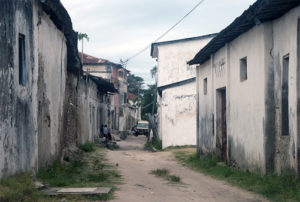 in Bagamoyo before continuing their journey to Asia and other parts of the world. Later on, the German colonialists made it their East African capital from 1886 to 1891. Bagamoyo is also excellent for experiencing the Swahili culture because it was an entry point for foreign traders, explorers, Arabs and missionaries. The key activities while in Bagamoyo are visiting the old slave for, the Mission Museum, the first Roman catholic church, Livingstone Memorial Church, the headquarters of German colonial rule and some of the best beaches in the East African coast.
in Bagamoyo before continuing their journey to Asia and other parts of the world. Later on, the German colonialists made it their East African capital from 1886 to 1891. Bagamoyo is also excellent for experiencing the Swahili culture because it was an entry point for foreign traders, explorers, Arabs and missionaries. The key activities while in Bagamoyo are visiting the old slave for, the Mission Museum, the first Roman catholic church, Livingstone Memorial Church, the headquarters of German colonial rule and some of the best beaches in the East African coast.
Spend time with the Sukuma Tribe: The Sukuma are bantu speaking people who originated from Uganda and settled in the northern part of the country. They are both farmers and cattle keepers and farmers. As the largest ethnic group in the country, the Sukuma can be found in almost every part of the 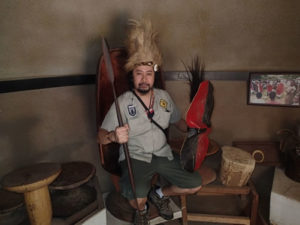 country. Although the Sukuma have embraced western culture and dress code, one can have an amazing cultural experience in their villages. The elders in the villages still practice their traditional beliefs and culture. You can still notice traditional cuttings on their bodies. The traditional dance competitions held between May to September attract tourists who are visiting the country on safari.
country. Although the Sukuma have embraced western culture and dress code, one can have an amazing cultural experience in their villages. The elders in the villages still practice their traditional beliefs and culture. You can still notice traditional cuttings on their bodies. The traditional dance competitions held between May to September attract tourists who are visiting the country on safari.
On a typical visit to one of the homesteads in the rural areas, you can take part in tending the garden, taking the cows for water/pasture, fetching water in the swamps and cooking their traditional dishes. Ugali is the staple food of the Sukuma and can be consumed with vegetables or chicken/beef on special occasions. Fermented milk and locally made beer is also a popular drink among the Sukuma.
Visit Museums: There are several museums to consider visiting once in Tanzania but the Bujora Sukuma Museum and the National Museum in Dar es Salaam stand out. Bujora Sukuma museum was 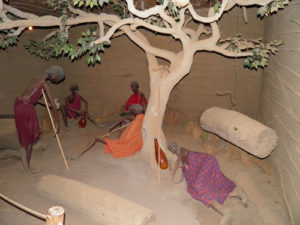 built in 1954. It lies 18 kilometers away from Mwanza city and most of the exhibits are of the Sukuma tribe. The National Museum in Dar es Salaam is even more interesting because it exposes all that is beautiful about the Tanzanian people and culture. This is where you will also find some of the fossils discovered by Leaky at Olduvai Gorge. For those who wish to learn about the history of slave trade in the East African cost, this one place you ought to visit. By the end of your visit to the National Museum in Dar es Salaams, you will have spotted vintage cars, musical instruments, adornments and beautiful art pieces.
built in 1954. It lies 18 kilometers away from Mwanza city and most of the exhibits are of the Sukuma tribe. The National Museum in Dar es Salaam is even more interesting because it exposes all that is beautiful about the Tanzanian people and culture. This is where you will also find some of the fossils discovered by Leaky at Olduvai Gorge. For those who wish to learn about the history of slave trade in the East African cost, this one place you ought to visit. By the end of your visit to the National Museum in Dar es Salaams, you will have spotted vintage cars, musical instruments, adornments and beautiful art pieces.

Thank you for such a great work and elaborate article. I am from the Iraqi community but currently living in the US.
Keep it up!